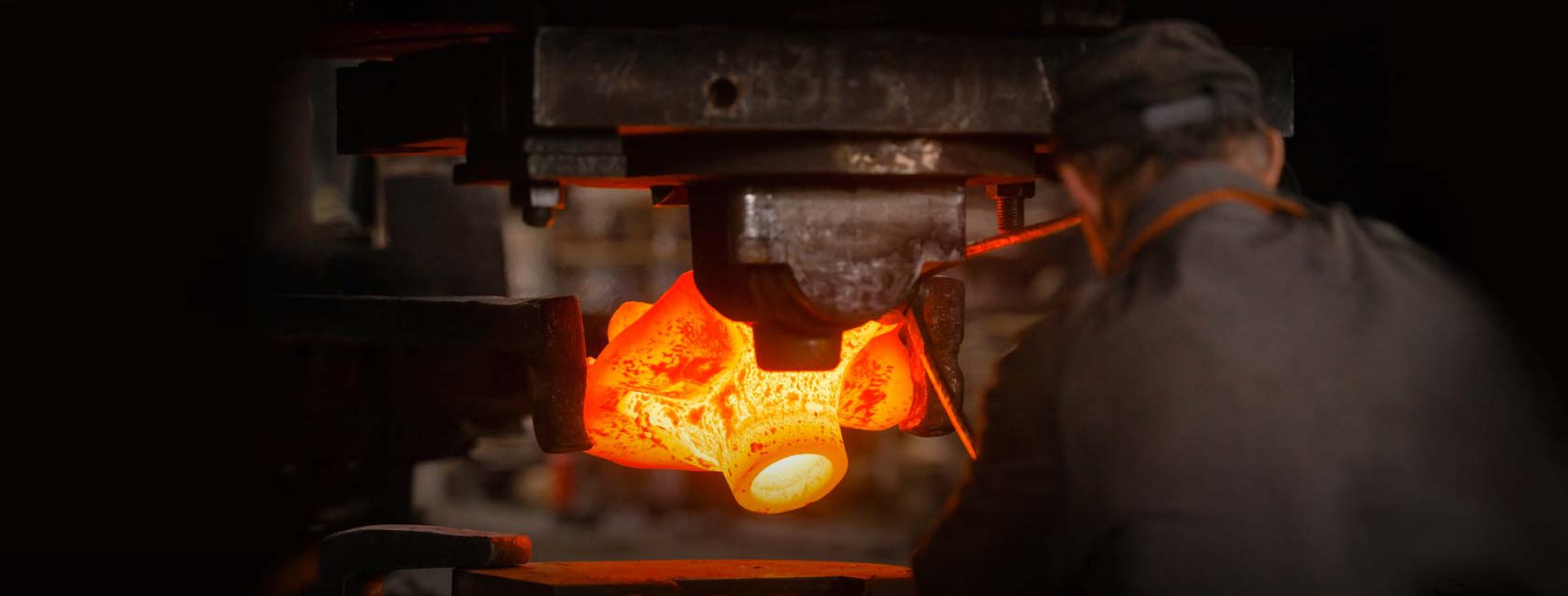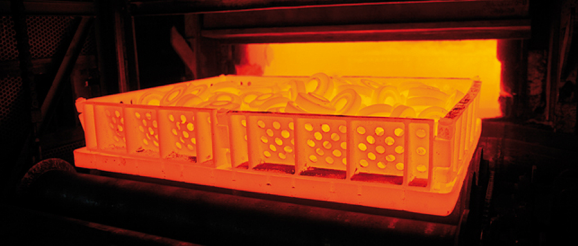Heat Treatment is one of the main value added services CFS Forge offers for steel forgings. Heat treatment is a post treatment method that aims to change the mechanical properties of produdcts for better working performance. All the steel forgings can be heat treated after forging.
Heat Treatment Services in Our Factory
The heat treatment after closed die forging plays an important role in developing the desired properties such as the relieving of internal stresses, the refinement of grain structure, and the attainment of improved mechanical and physical properties. For machinability, CFS Forge supplies forgings in the annealed, normalized, normalized and tempered, process annealed, spheroidized or full annealed condition. The steel forgings may then be quenched and tempered to achieve the final desired properties. Below we will introduce some of the common heat treatment methods after forging available at CFS Forge.
FULL ANNEALING
Forgings restores the softness of the metal. The forging is heated to a specific temperature then cooled in a furnace according to specific time intervals for uniform softness through the entire forging.
NORMALIZING
Involves heating the forging to a specific temperature and then allowing the forging to cool in still air. The result is the restoration of ductility. Normalized forgings are less expensive than full annealed forgings because full annealing relies on furnace-controlled cooling.
QUENCHINING AND TEMPERING
First quenches the metal forging then heats it again to a temperature between 400 and 600°C. Tempering establishes the correct balance of strength and ductility within the forging.
PROCESS ANNEALING
Used for low carbon steel forgings. The forging is heated to a temperature lower than those used in full annealing or normalizing and then is allowed to cool in still air. This alters the grain size and flow of the forging.
SPHEROIDIZING
Used for high-carbon steel forgings as well as tool steel and alloy steel forgings. The process forms spheroids throughout the structure of the forging which results in improved machinability.
Quenching and tempering is the most widely used heat treatment methods, it can effectively improve the hardness of steel forgings to add the strength for better wear resistance in a low cost.
Conclusion
Heat-treatment, changing the properties of steel forgings such as carbon steel or alloy steel by processes involving heating. It is used to harden, soften, or modify other properties of materials that have different crystal structures at low and high temperatures. The type of transformation depends on the temperature that the material is heated to, how fast it is heated, how long it is kept heated, what temperature it is first cooled to, and how fast it is cooled. For example, quenching hardens steel by heating it to high temperatures and then quickly immersing it in room temperature oil, water, or salt brine to prevent carbon atoms from moving through the crystal structure and forming carbides, which soften the metal. The two main approaches to softening a metal (to restore its ductility) are annealing, in which its temperature is slowly raised, held for some time, and slowly cooled, and tempering, in which it is slowly heated in an oil bath and held for some hours.
Besides heat treatment, CFS Forge can supply other services like in house tooling, machining, surface coatings, ect. according to the drawing specification. Once your steel forging have any heat treatment demands, pls contact us. We have such capabilities to support your products.


